Making a fashion statement on a bright winter’s day
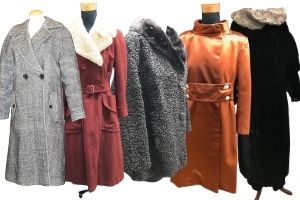
A blog post by Director of Collections and Exhibits Joanna Church. To read more posts by Joanna click HERE.
As we said in the introduction to our 2019 exhibit Fashion Statement, “Your clothes send a message. What we wear can express, or disguise, our status, origins, values, and beliefs. Through style and materials, as well as literal text and logos, clothes show the world both who we are and who we want to be.” I’d hazard that for most of us, the stage from which we send that message tends to be relatively low-profile. But what if you find yourself on an actual stage, in the national or even international spotlight? And it’s January? What if, say, your stepmother or grandfather has been elected to national office, and everything you wear – shoes, coat, jewelry, mask – to the inauguration will be parsed and dissected and praised and dismissed by countless reporters and pundits, Pulitzer Prize winning journalists and amateur critics, and everyone in between? What meanings and stories would you want to convey through your attire?
I found myself thinking these questions yesterday, in the warm – and unscrutinized – safety of my office at the JMM, as I watched the inauguration of President Biden and Vice President Harris. Well, to be truthful, first I found myself thinking simply “LOOK AT THOSE FANTASTIC COATS” because a good statement coat is an important part of a wardrobe, even a wardrobe as unimaginative and inexpensive as my own, and there were some gorgeous examples at the Capitol yesterday. Next I thought, “Some of those people do not look like they’re warm enough!” because I don’t like cold weather, and to my mind, a statement coat also needs to be a functional one. And thirdly, I turned to the internet to learn more about the specific coats worn by some of these women and men: who made them, what the color or style meant, and why they were chosen for this particular spotlight.
So really it wasn’t until after the ceremony was over, and I’d digested the proceedings and done my research (such as here and here) about how the internet was reacting to these fine winter garments, that I wondered what I would wear if I ended up on that stage, or any stage of similar scope (and temperature). I love my fuzzy plaid coat, but would it be the best choice here? Probably not. So, as always, I turned to our collections to see what inspiration could be found there.
I thought first of our luxurious ermine coat, which was featured in Fashion Statement. I could never carry this coat off, personally, but I didn’t want our readers to think I’d forgotten about it! So please click that link to see it in action. Now, on to my top picks for “If I were there” wear from our collection…
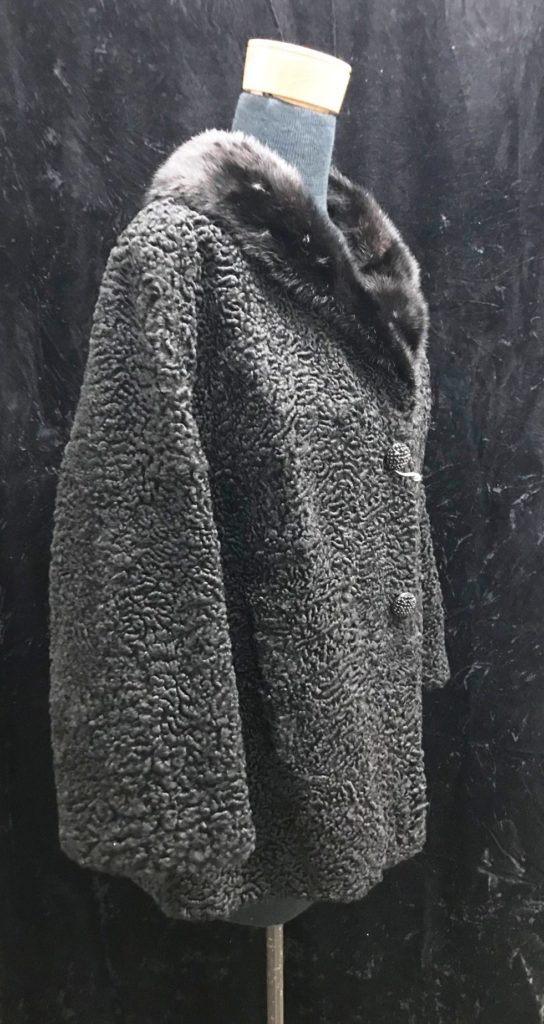
This one looks warm, and the style and material was extremely fashionable for a time; it would be a strong vintage look. It’s not very long, though, and it might be more appropriate for a quick dash from automobile to the theater than for an hour-plus outside.
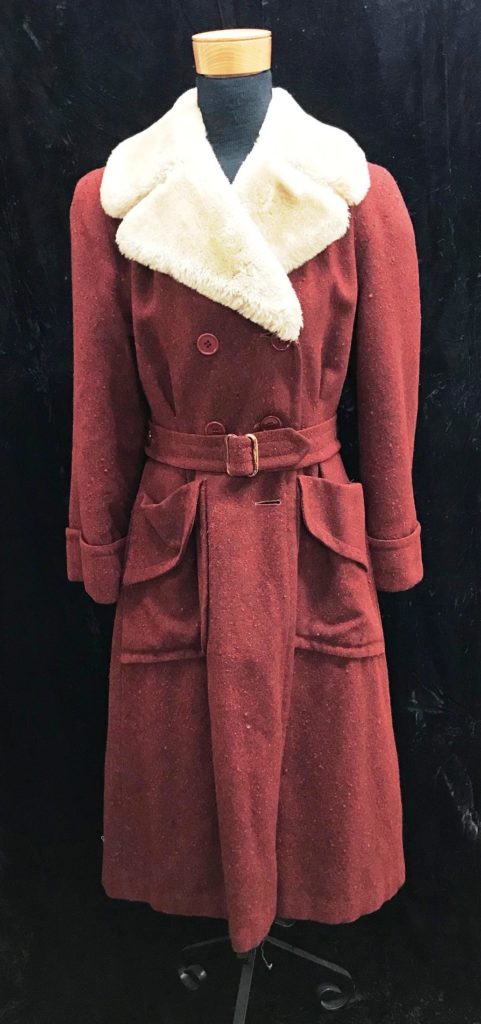
The wool outer shell, fuzzy wool lining, quilted sleeves (with secret knitted cuffs inside to keep the breeze out), and oversize fuzzy collar look warm, and the coat is nice and long. The label also tells me it has been “treated with Cravenette Long Life – Water Repellent – Sheds Showers,” which sounds handy if the weather turns, and it has the always-important pockets. The bold shade is a point in its favor, especially considering the colorful options worn at yesterday’s ceremony. This one is a contender, I think.

Rust-colored satin coat with rhinestone buttons on a sash belt, Calvin Klein (sold by Hochschild-Kohn), circa 1970. Gift of Ruth Rifman. JMM 1996.101.1
I like the color, the silhouette, and the bling, but this one is not warm enough for most January days in D.C. Best save it for another event later in the spring.
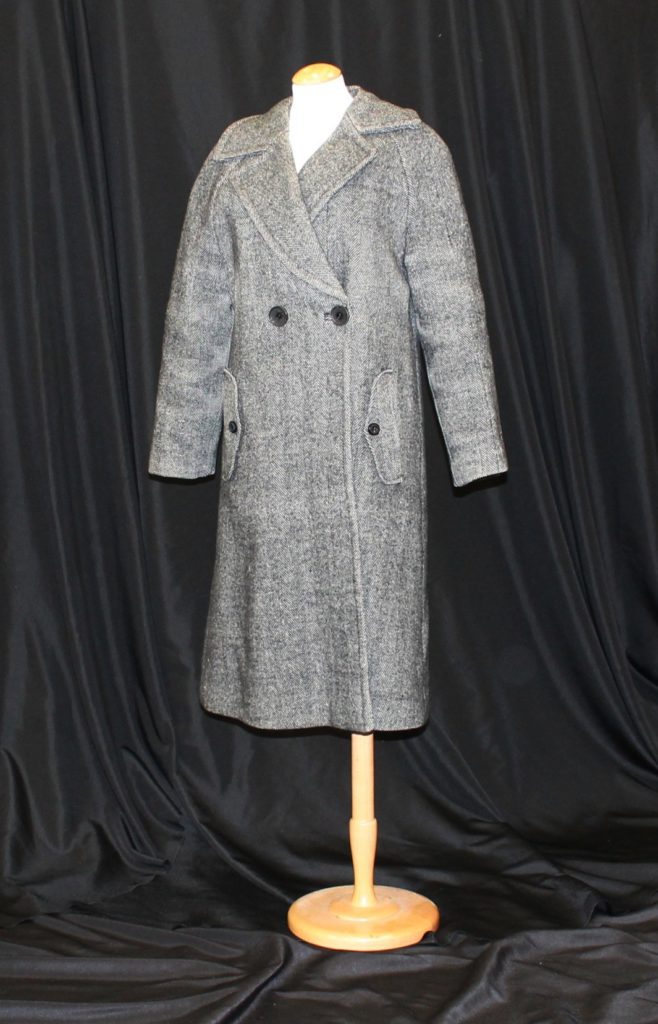
This heavy coat seems like it would be extremely warm, and has nice big pockets for gloves, tissue, an extra facemask, and anything else you might need. This is a good option for conveying steadfastness of purpose: clean lines, no fuss. And you can’t get a better story than “this was made by the original owner’s mother.”
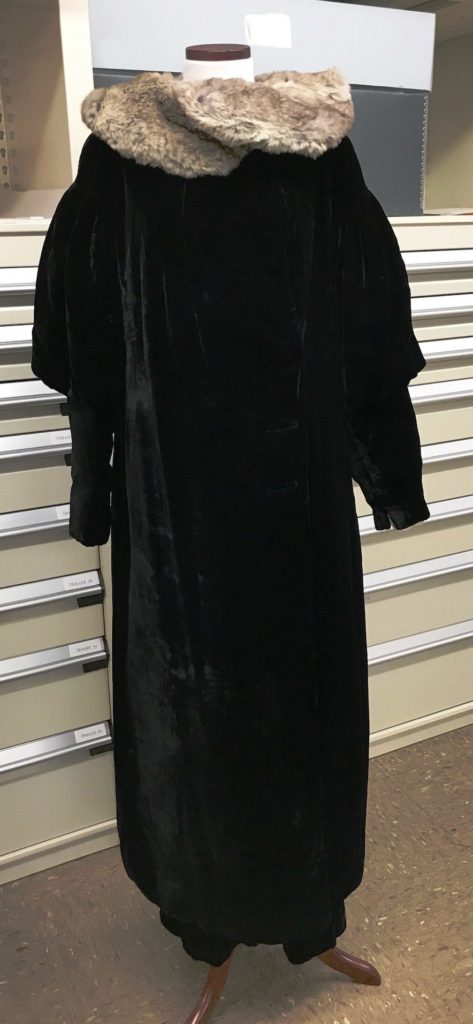
A winner! If I were able to magically recreate anything from our collection to wear to an inauguration, this is the one I would choose, even over the 1940s red wool (though that is a close runner-up). This coat has a matching dress, for one thing, making for an easy choice about what to wear underneath; it’s nice and long, with a fluffy collar into which I can sink while sitting in a folding chair waiting for the speeches to be over (and my oversize striped mittens can be hidden in the folds). It is almost like wearing an extremely fashionable lap blanket. And to top it off, the story of a Baltimore tailor, a Jewish immigrant, making a beautiful coat for his daughter is the perfect tale to tell the reporters who want to know why I went with this black velvet ensemble.
***
If you were invited to be on the stage during an inauguration, for whatever reason, would you go for practicality or style? Something from your closet, or a brand new option? Vintage, or a modern designer? Boldly colored and sparkly trends, or muted tradition? A coat that makes watchers say “Ah yes, that’s peak [YOU],” or would you hope to surprise them? Each choice tells the world something a little bit different. I urge you to remember that the statements about sustainability, underrepresented designers, and American manufacturing, while important, are no more so than those that speak to family, history, and memory. So tell us: what coat – from these options, or from anywhere – would you choose?
